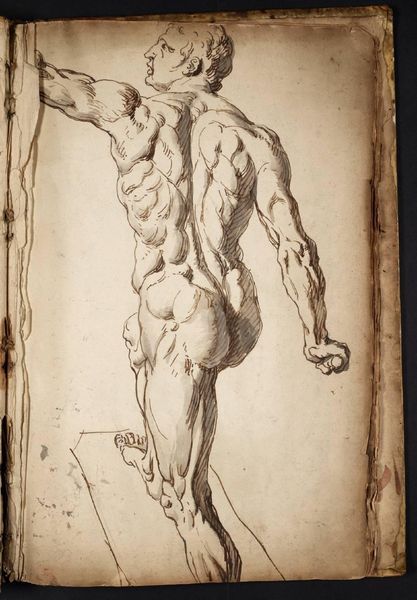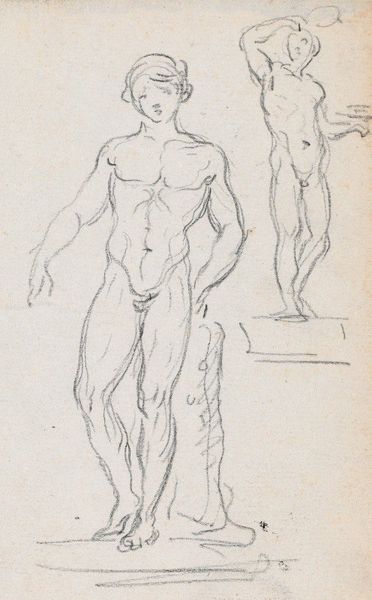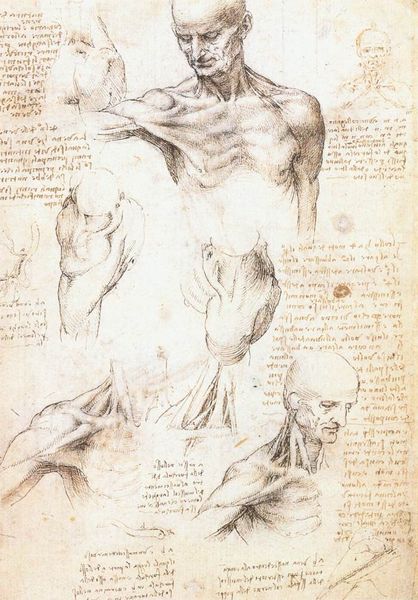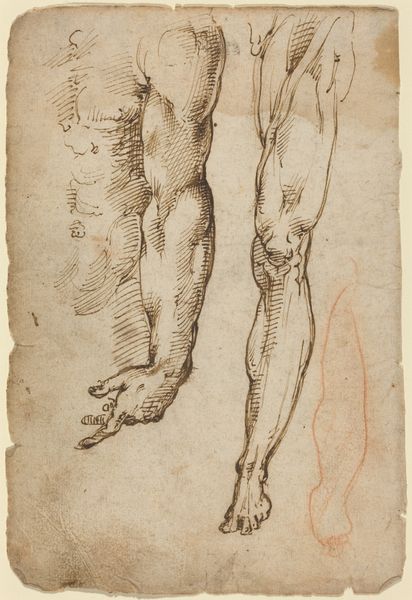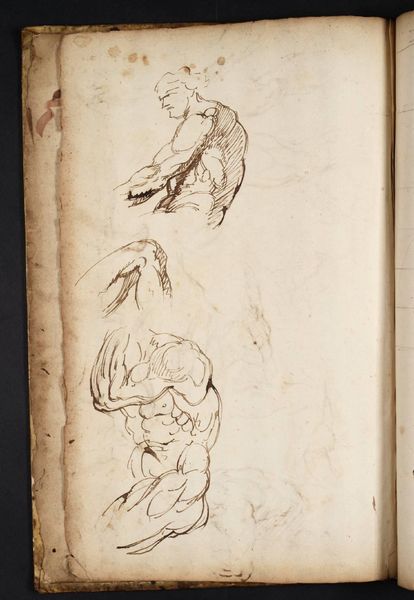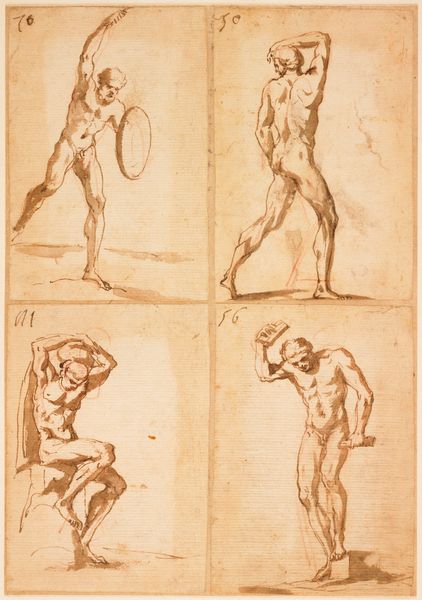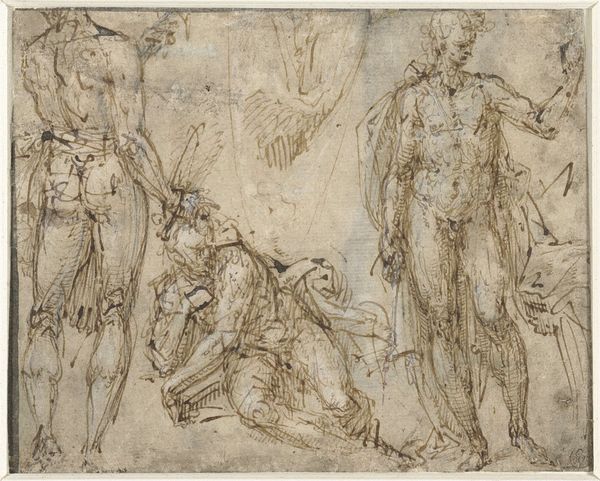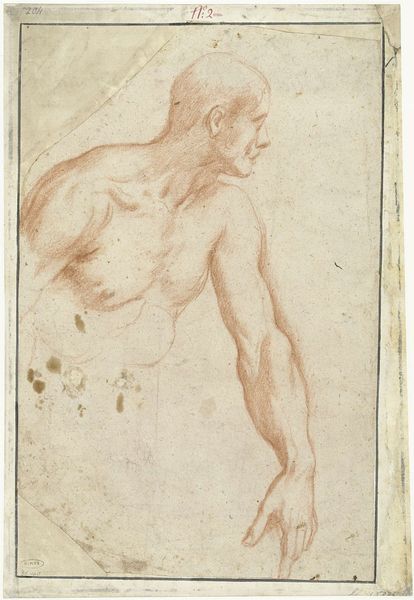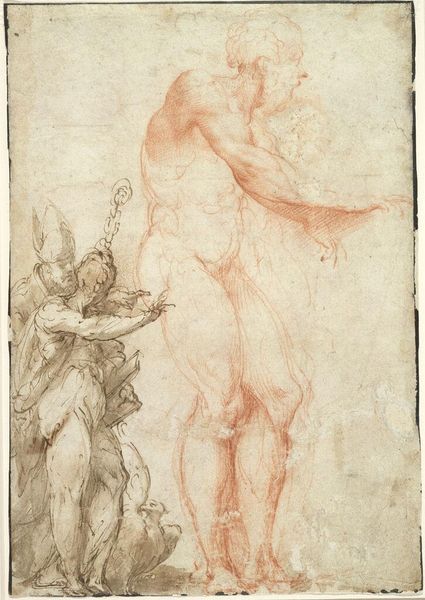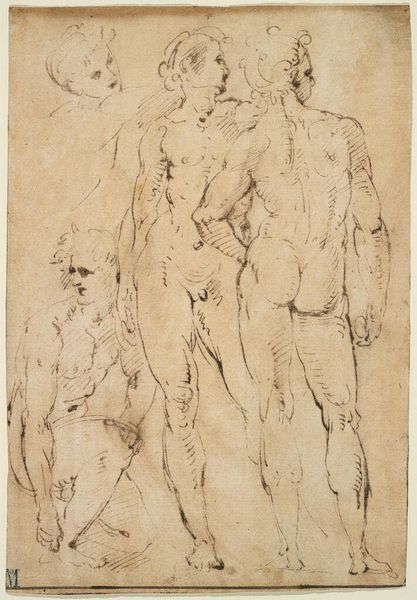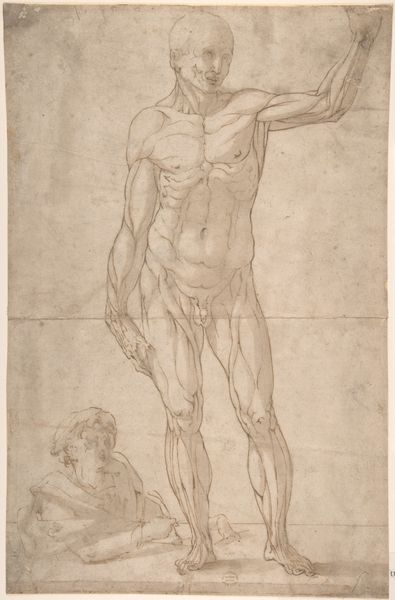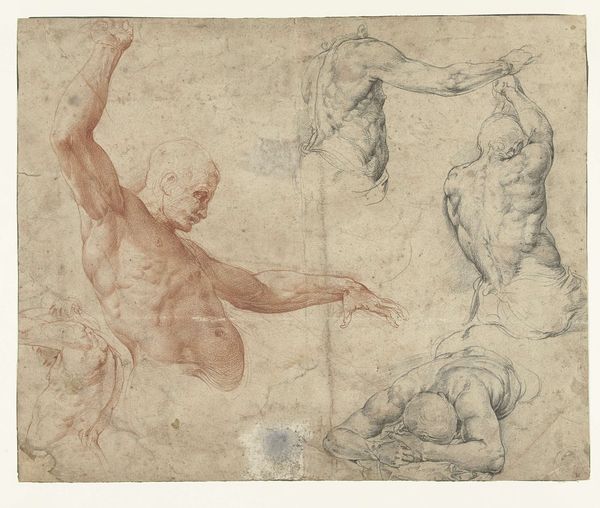
Study of the Farnese Hercules (Reversed), a Standing Male Nude, and Other Anatomical Studies
0:00
0:00
Dimensions: support: 354 x 230 mm
Copyright: CC-BY-NC-ND 4.0 DEED, Photo: Tate
Curator: Here we have Joseph Highmore’s "Study of the Farnese Hercules (Reversed), a Standing Male Nude, and Other Anatomical Studies," currently held in the Tate Collections. Editor: Wow, it's like stepping into the artist's mind, isn't it? There's something so raw and vulnerable about these sketches. Curator: Indeed, Highmore engaged deeply with classical sculpture and anatomical study, as was considered imperative for academic artists of his time. The drawing reveals a concerted effort to understand the male figure. Editor: The figure is so strong, yet there's this faded quality that makes me think about mortality, about the impermanence of even the most powerful bodies. Is there a link to the politics of the body at the time? Curator: Absolutely. The 18th century saw a rise in discourses surrounding masculinity, strength, and the ideal body, often tied to notions of empire and national identity. But also, class distinctions are inherent in access to such art. Editor: It makes you think, doesn’t it? It's more than just muscles; it's about power, representation, and who gets to be seen in these ways. Curator: Precisely. Editor: Makes you wonder what Highmore was really trying to capture beyond anatomy. Curator: It’s an echo of history whispering through the lines.
